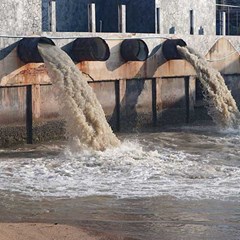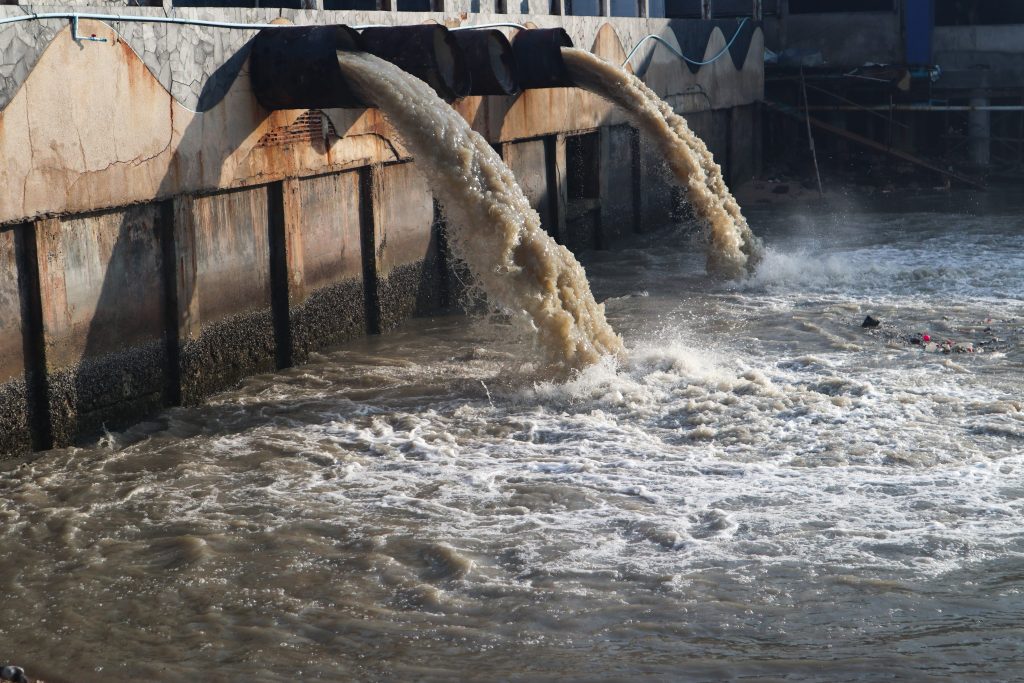Industrial Waste Water Treatment-- Eco-Friendly Solutions for Water Recycling
Industrial Waste Water Treatment-- Eco-Friendly Solutions for Water Recycling
Blog Article
Key Strategies in Hazardous Waste Water Therapy Processes
The treatment of commercial wastewater is an important facet of ecological administration, involving an array of techniques designed to reduce the impact of pollutants. Improvements in innovations such as membrane filtering and advanced oxidation processes provide innovative options for improving therapy effectiveness.
Physical Therapy Methods
Exactly how effectively can physical therapy techniques resolve the intricacies of industrial wastewater? Physical treatment methods play a crucial role in the preliminary phases of wastewater management, focusing mainly on the removal of solids and huge particulates. Techniques such as flotation, purification, and sedimentation are important for lowering the concentration of put on hold solids, thereby enhancing the performance of succeeding treatment processes.
Sedimentation entails the gravitational settling of solids, allowing for the separation of heavier materials from the wastewater. This method is particularly reliable in clearing up water prior to biological or chemical treatments.
Furthermore, flotation protection methods, which make use of air bubbles to raise suspended solids to the surface for removal, are reliable in dealing with wastewater with high concentrations of fats, oils, and greases. Generally, physical treatment approaches work as an important primary step in the extensive management of industrial wastewater, ensuring that the load on subsequent therapy phases is decreased and improving general treatment efficiency.
Chemical Therapy Methods
While physical therapy techniques prepared for reliable wastewater management, chemical treatment techniques are crucial for attending to the more complex pollutants usually discovered in commercial effluents. These methods make use of numerous chemical representatives to precipitate, counteract, or oxidize hazardous materials, making certain a more complete removal of pollutants.
One common approach is coagulation and flocculation, where chemical coagulants such as aluminum sulfate or ferric chloride are included to promote the gathering of put on hold fragments. This process improves solid-liquid separation, reducing turbidity and improving water top quality. Additionally, neutralization processes are used to adjust the pH of wastewater, utilizing bases or acids to reduce the effects of acidic or alkaline streams, specifically.
Oxidation-reduction reactions play a crucial duty in derogatory natural impurities and pathogens. Chemical oxidants like chlorine, hydrogen, or ozone peroxide are utilized to break down complex natural substances, making them much less hazardous or much more naturally degradable. Additionally, progressed oxidation processes (AOPs) incorporate several oxidation techniques to enhance toxin elimination effectiveness.
Organic Treatment Procedures
The efficiency of wastewater therapy is substantially improved by organic therapy processes, which harness the natural metabolic tasks of microorganisms to decay organic issue and eliminate contaminants. Industrial Waste Water Treatment. These processes largely involve anaerobic and aerobic digestion, each tailored for specific kinds of wastewater
Cardio treatment processes use oxygen to support microbial growth, promoting the breakdown of organic pollutants into carbon dioxide and water. Usual techniques consist of activated sludge systems, where oygenation tanks promote the mixing of wastewater with microbes, and dripping filters, which urge biofilm advancement on media surfaces.
Alternatively, anaerobic treatment procedures occur in the absence of oxygen, using anaerobic bacteria to disintegrate raw material, resulting in biogas production, a renewable resource resource. Anaerobic digesters are usually used in industrial settings for this function, successfully reducing the volume of sludge while producing important biogas.
The selection of an organic therapy method depends on wastewater characteristics, therapy goals, and regulatory criteria. The integration of organic procedures in wastewater treatment not only enhances contaminant removal you could try here efficiency however additionally promotes sustainability by minimizing chemical use and supporting source recuperation.
Advanced Oxidation Processes

Usual AOP methods consist of Fenton's ozonation, photocatalysis, and reagent. Fenton's reagent, a mix of hydrogen peroxide and ferrous iron, militarizes the formation of hydroxyl radicals, making it effective for dealing with wastewater having phenolic substances and various other recalcitrant compounds.
AOPs offer a number of advantages, including minimized sludge production and the capacity to treat wastewater with high concentrations of organic contaminants. Nevertheless, the application of AOPs calls for cautious factor to consider of operational specifications and cost-effectiveness, making certain that these innovative browse around here techniques are properly incorporated right into existing wastewater therapy systems.
Membrane Purification Technologies

Microfiltration is efficient for getting rid of put on hold microorganisms and solids, while ultrafiltration targets smaller organic molecules and infections. Nanofiltration links the space in between ultrafiltration and turn around osmosis, effectively eliminating natural substances and divalent ions. Reverse osmosis supplies the highest possible level of purification, made use of mostly for desalination and eliminating mono-valent ions.
Membrane layer modern technologies offer numerous advantages, consisting of low power usage contrasted to conventional treatment methods, modular style for scalability, and the potential for water healing and reuse. Challenges such as membrane fouling and the requirement for routine upkeep need to be addressed to make sure system efficacy. Overall, membrane filtering technologies represent an essential part of modern industrial wastewater treatment methods, promoting sustainability and source conservation in water management.
Final Thought
In verdict, commercial wastewater therapy uses a diverse range of techniques, including physical, chemical, biological, and progressed methods. Proceeded developments in these methodologies will additionally Continue boost the performance and efficiency of wastewater treatment procedures in commercial settings.
The treatment of industrial wastewater is a vital facet of ecological monitoring, including a range of strategies developed to reduce the effect of contaminants.How successfully can physical treatment techniques deal with the complexities of commercial wastewater?Advanced oxidation procedures (AOPs) stand for an innovative strategy in industrial wastewater therapy, created to effectively deteriorate organic toxins that are often resistant to standard therapy approaches (Industrial Waste Water Treatment).In conclusion, commercial wastewater therapy employs a diverse array of strategies, including physical, chemical, biological, and advanced techniques. Continued developments in these methods will certainly additionally boost the performance and efficiency of wastewater treatment processes in industrial settings
Report this page